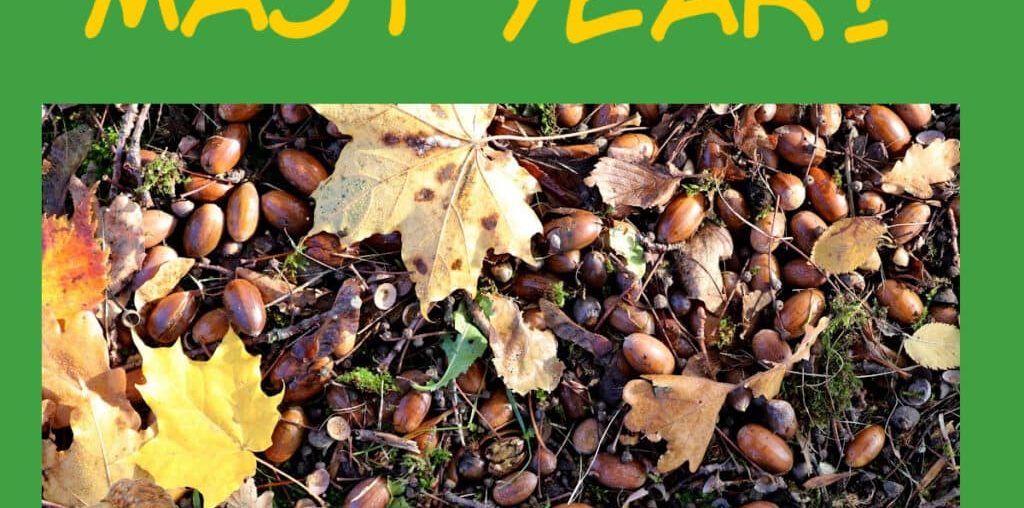Have you noticed more acorns than usual this year? It feels like everywhere we go, there are paths filled with acorns and leaves.
A mast year occurs when trees and shrubs produce more seeds than usual. The collective term for fruits, nuts and seeds produced by trees is called mast, hence the term mast year. A mast year occurs every 2-5 years.
Why do trees have mast years?
Mast years don’t just happen for individual trees. It is usual for most trees of a particular species to have a mast year at the same time. Scientists don’t know how this synchronisation happens, but they do know that the weather plays a role. To have a bumper crop one year, the temperature and rainfall have to support the growth.
One theory as to why mast years happen is predator satiation. When smaller crops happen over a period of a few years, there’s enough food for the animals that depend on them, but not enough for population growth, so the number of predators remains low. When a mast year occurs, there’s more food than the low population of predators can eat, which means that a lot of the seeds are left uneaten and can germinate and grow into new trees. The huge number of seeds also leads to a boost in the population of the mammals that depend on them,
For a tree to produce such a huge quantity of seeds takes a lot of energy, which is why they cannot do it every year.
Learn more about trees
Find out how tall a tree is using a clever maths trick.
Discover why leaves change colour in autumn.
Last Updated on October 17, 2025 by Emma Vanstone
The post What is a Mast Year appeared first on Science Experiments for Kids.
Science Experiments for Kids Read More

